
views
X
Research source
Designing a Scientifically Sound Experiment
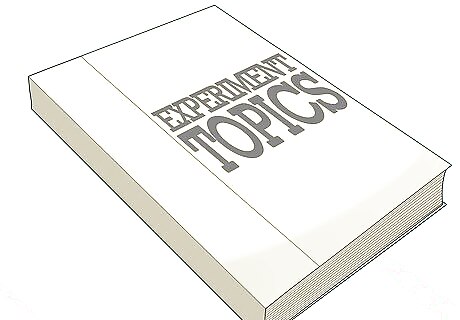
Pick a specific topic. Experiments whose results cause sweeping scientific paradigm shifts are very, very rare. The vast majority of experiments answer small, specific questions. Scientific knowledge is built upon the accumulation of data from countless experiments. Pick a topic or an unanswered question with a small, testable scope. To get ideas, look for gaps in the current scientific literature. For instance, if you want to do an experiment on agricultural fertilizer, don't seek to answer the question, "Which kind of fertilizer is best for growing plants?" There are many different types of fertilizer and many different kinds of plants in the world - one experiment won't be able to draw universal conclusions about either. A much better question to design an experiment around would be "What concentration of nitrogen in fertilizer produces the largest corn crops?" Modern scientific knowledge is very, very vast. If you intend to do serious scientific research, research your topic extensively before you even begin to plan your experiment. Have past experiments answered the question you want your experiment to study? If so, is there a way to adjust your topic so that it addresses questions left unanswered by existing research?
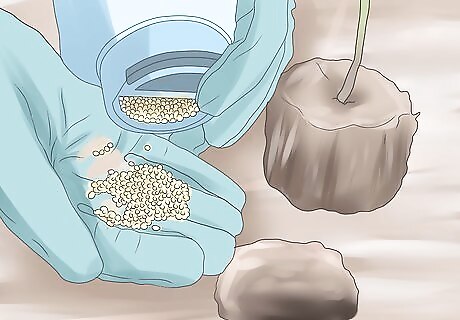
Isolate your variable(s). Good scientific experiments test specific, measurable parameters called variables. In general terms, a scientist performs an experiment for a range of values for the variable he's testing for. One vital concern when performing an experiment is to adjust only the specific variable(s) you are testing for (and no other variables.) For instance, in our fertilizer experiment example, our scientist would grow multiple corn crops in soil supplemented with fertilizers whose nitrogen concentration differs. He would give each corn crop the exact same amount of fertilizer. He would make sure the chemical composition of his fertilizers used did not differ in some way besides its nitrogen concentration - for instance, he would not use a fertilizer with a higher concentration of magnesium for one of his corn crops. He would also grow the exact same number and species of corn crops at the same time and in the same type of soil in each replication of his experiment.

Make a hypothesis. A hypothesis is essentially a prediction of the experiment's result. It shouldn't be a blind guess - good hypotheses are informed by the background research you performed and/or preliminary data you may have already generated in the lab when choosing your experiment's topic. Base your hypothesis on the results of similar experiments conducted by peers in your field, or, if you're tackling a problem that hasn't been well-studied, base it on whatever combination of literature research and recorded observation you can find. Remember that despite your best research work, your hypothesis may very well not be supported by your results - in this case, you've still expanded your knowledge in the sense that you have proven that your prediction was not correct. Typically, a hypothesis is expressed as a quantitative declarative sentence. A hypothesis also takes into account the ways that the experimental parameters will be measured. A good hypothesis for our fertilizer example is: "Corn crops supplemented with 1 pound of nitrogen per bushel will result in a greater yield mass than equivalent corn crops grown with differing nitrogen supplements."

Plan your data collection. Know beforehand when you will collect data and what kind of data you will collect. Measure this data at a set time or, in other cases, at regular intervals. In our fertilizer experiment, for instance, we'll measure the weight of our corn crops (in kilograms) after a set growing period. We'll compare this to the nitrogen content of the fertilizer each crop was treated with. For other experiments (such as ones that measure the change in a certain variable over time), it's necessary to collect data at regular intervals. Timing is incredibly important, so stick to your plan as close as possible. That way, if you see changes in your results, you can rule out different time constraints as the cause of the change. Making a data table beforehand is a great idea - you'll be able to simply insert your data values into the table as you record them. Know the difference between your dependent and independent variables. An independent variable is a variable that you change and a dependent variable is the one affected by the independent variable. In our example, "nitrogen content" is the independent variable, and "yield (in kg)" is the dependent variable. A basic table will have columns for both variables as they change over time.
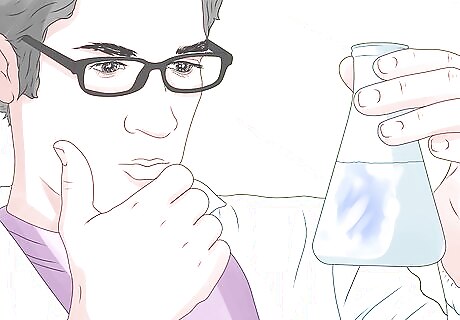
Conduct your experiment methodically. Run your experiment, testing for your variable. This almost always requires you to run the experiment multiple times for multiple variable values. In our fertilizer example, we'll grow multiple identical corn crops and supplement them with fertilizers containing varying amounts of nitrogen. Generally, the wider range of data you can gather, the better. Record as much data as is feasible. Good experimental design incorporates what's known as a control. One of your experimental replications should not include the variable you're testing for at all. In our fertilizer example, we'll include one corn crop which receives a fertilizer with no nitrogen in it. This will be our control - it will be the baseline against which we'll measure the growth of our other corn crops. Observe any and all safety measures associated with hazardous materials or processes in your experiment.

Collect your data. Record your data directly into your table, if possible - it'll save you the headache of re-entering and consolidating data later. Know how to assess outliers in your data. It's always a good idea to represent your data visually if you can. Plot data points on a graph and express trends with a line or curve of best fit. This will help you (and anyone else who sees the graph) visualize patterns in the data. For most basic experiments, the independent variable is represented on the horizontal x axis and the dependent variable is on the vertical y axis.
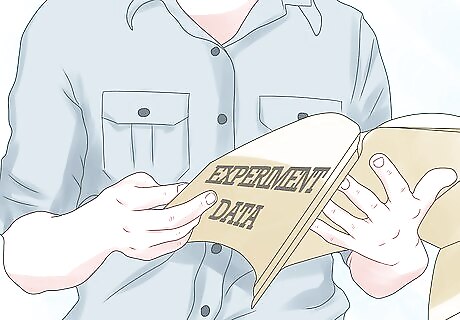
Analyse your data and come to a conclusion. Was your hypothesis correct? Were there observable trends in the data? Did you encounter any unexpected data? Do you have any unanswered questions which might form the basis for a future experiment? Try to answer these questions as you assess your results. If your data doesn't give your hypothesis a definitive "yes" or "no," consider running additional experimental trials and collecting more data, or writing your results up with future directions for additional research. To share your results, write a comprehensive scientific paper. Knowing how to write a scientific paper is a useful skill - the results of most new research must be written and published according to a specific format, often dictated by the style guide for a relevant, peer-reviewed academic journal.
Running an Example Experiment
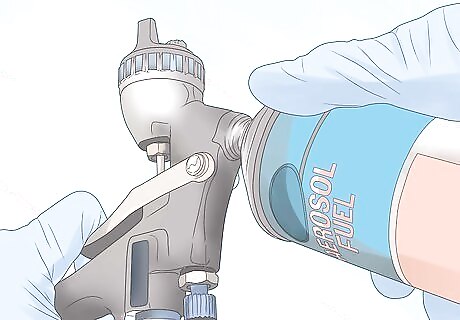
Pick a topic and define your variables. For the purpose of this example, we'll choose a simple, small-scale experiment. In our experiment, we'll test the effects of different aerosol fuels on the firing range of a potato gun. In this case, the type of aerosol fuel we use is the independent variable (the variable we change), while the range of the projectile is the dependent variable. Things to consider for this experiment - is there a way to ensure each potato projectile has the same weight? Is there a way to administer the same amount of aerosol fuel for each firing? Both of these can potentially affect the range of the gun. Weigh each projectile beforehand and fuel each shot with the same amount of aerosol spray.
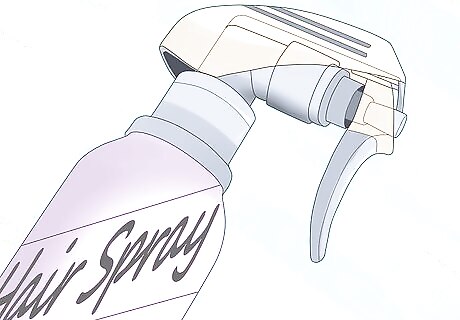
Make a hypothesis. If we're testing hair spray, cooking spray, and spray paint, let's say that the hair spray has an aerosol propellant with a higher amount of butane than the other sprays. Because we know that butane is flammable, we can hypothesize that the hair spray will produce a greater propulsive force when ignited, sending a potato projectile farther. We would write our hypothesis as: "The higher butane content of the aerosol propellant in the hairspray will, on average, produce a longer range when firing a potato projectile weighing between 250-300 grams."

Organize your data collection beforehand. In our experiment, we'll test each aerosol fuel 10 times and average the results. We'll also test an aerosol fuel which contains no butane as our experimental control. To prepare, we'll assemble our potato cannon, test it to ensure it works, buy our aerosol sprays and carve and weigh our potato projectiles. Let's also create our data table beforehand. We'll have five vertical columns: The furthest-left column will be labeled "Trial #." The cells in this column will simply contain the numbers 1-10, signifying each firing attempt. The following four columns will be labeled with the names of the aerosol sprays we're using in our experiment. The ten cells beneath each column header will contain the range (in meters) of each firing attempt. Below the four columns for each fuel, leave a space to write the average value of the ranges.
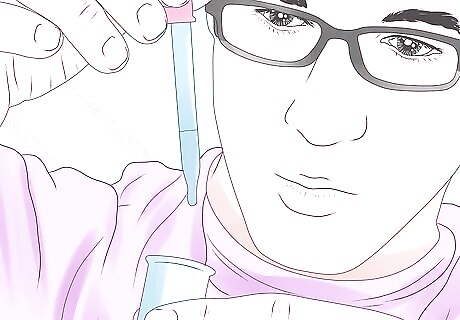
Conduct the experiment. We will use each aerosol spray to fire ten projectiles, using the same amount of aerosol spray to fire each projectile. After each firing, we will use a long tape measure to measure the range our projectile traveled. Record this data in the data table. Like many experiments, our experiment has certain safety concerns we need to observe. The aerosol fuels we're using are flammable - we should be sure to close the potato gun's firing cap securely and to wear heavy gloves while igniting the fuel. To avoid accidental injuries from the projectiles, we should also make sure that we (and any observers) are standing to the side of the gun as it fires - not in front of it or behind it.
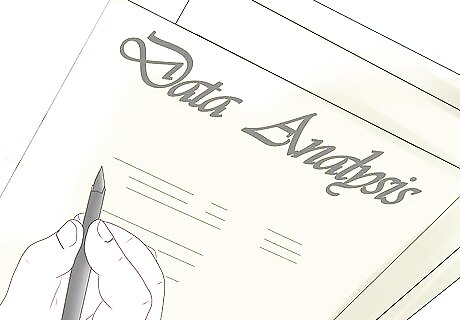
Analyze the data. Let's say we found that, on average, the hair spray shot the potatoes the farthest, but the cooking spray was more consistent. We can represent this data visually. A good way to represent the average range for each spray is with a bar graph, while a scatter plot or box plot is a good way to show the variation in each fuel's firing ranges.

Make your conclusions. Reflect on your experimental results and provide any supporting statistics. Based on our data, we can say with confidence that our hypothesis was correct. We can also say that we discovered something we didn't predict - that the cooking spray produced the most consistent results. We can report any problems or snafus we encountered - let's say that the paint from the spray paint built up inside the potato cannon's firing chamber, making repeated firing difficult. Finally, we can recommend areas for further research - for instance, maybe with greater amounts of fuel, we can achieve greater range. We can even share our results with the world in the form of a scientific paper - given the subject matter of our experiment, it may be more appropriate to present this information in the form of a tri-fold science fair display.




















Comments
0 comment